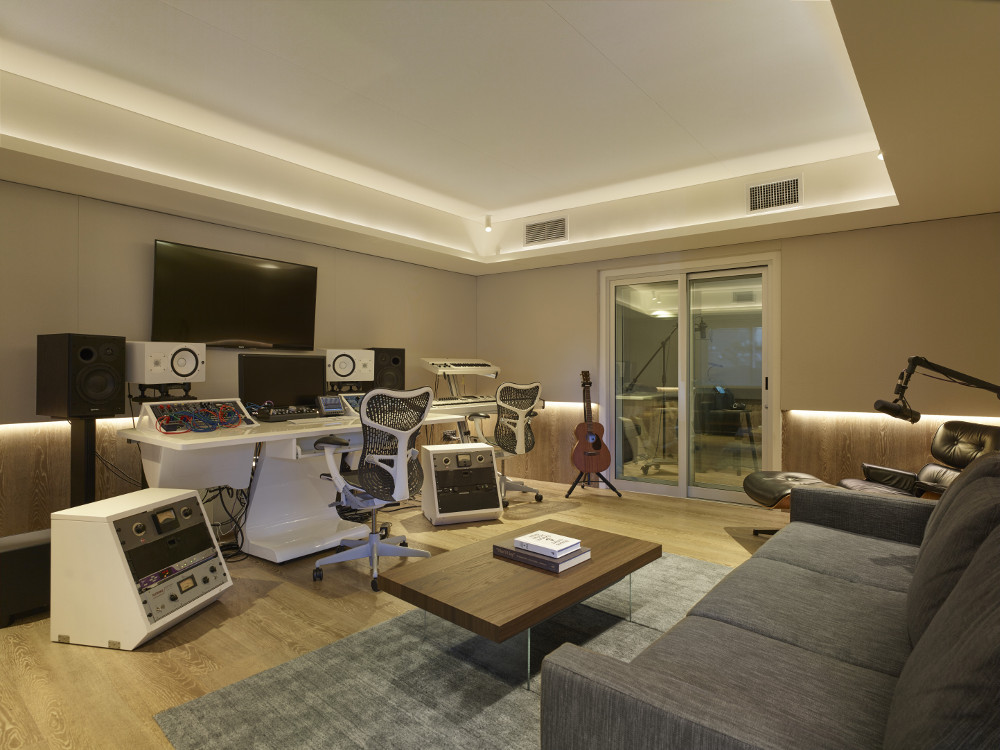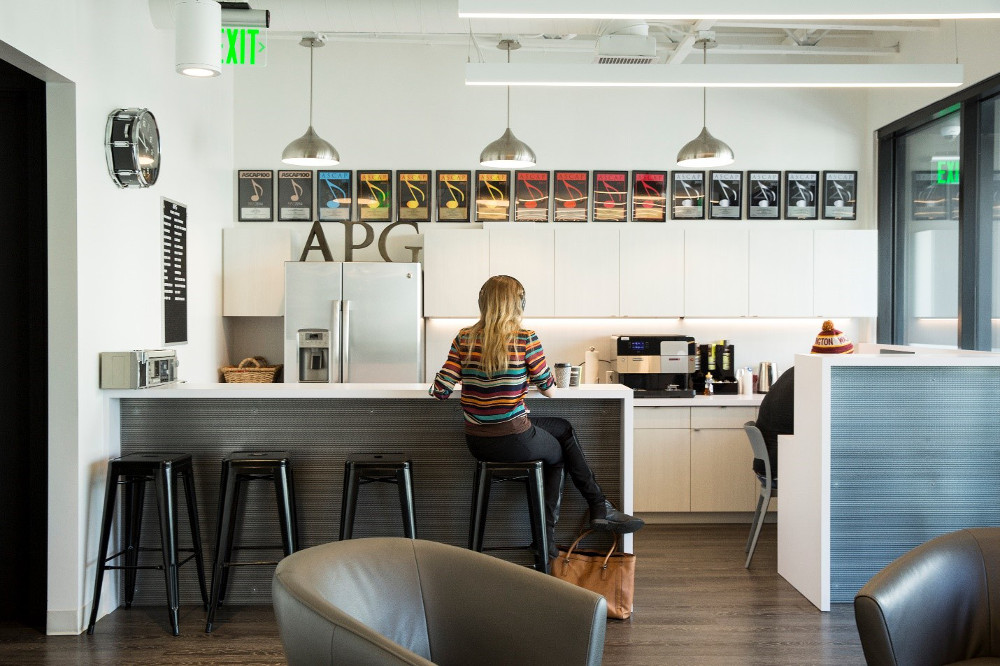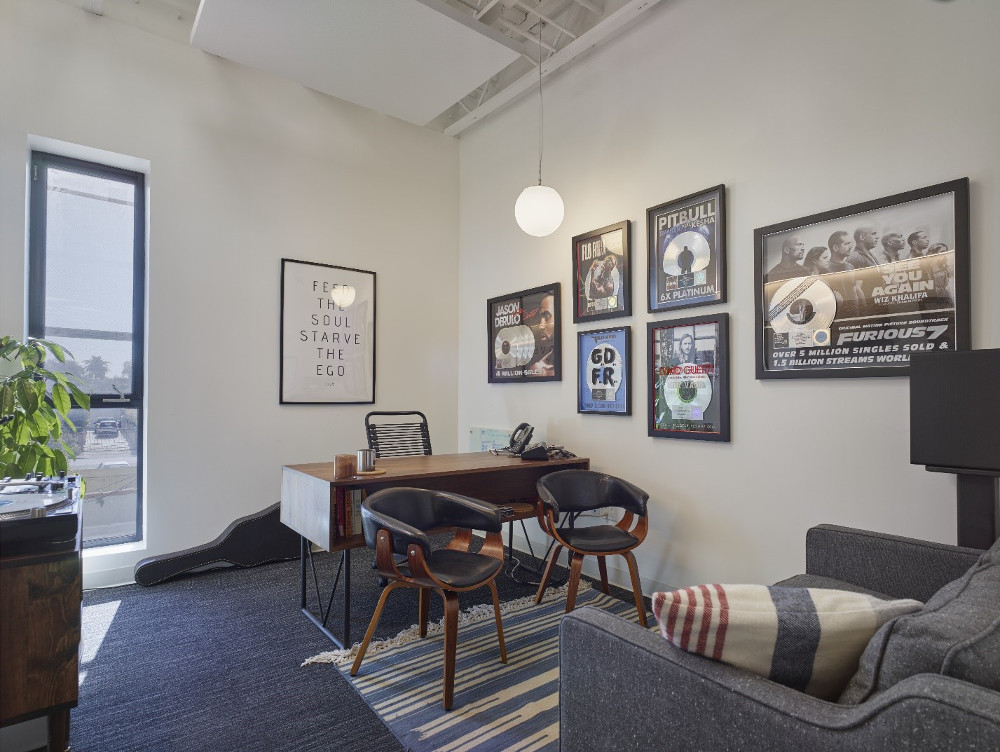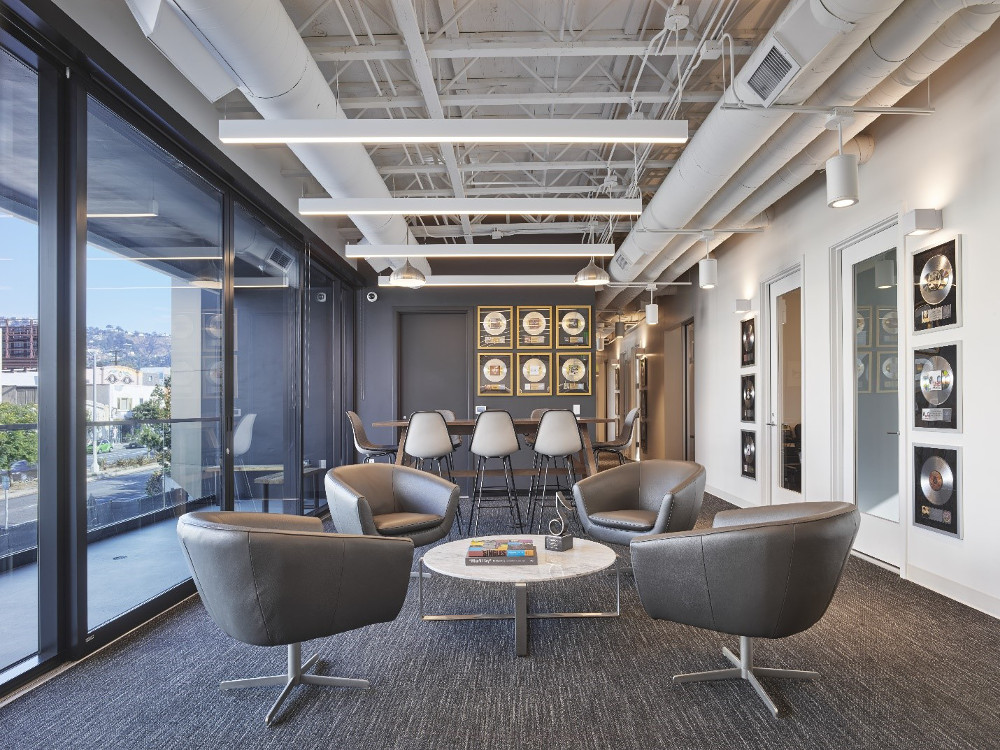Major Label Recording Complexes Are Back in Style: Inside “A Studio” in Los Angeles
There’s a pattern taking shape around LA.
Record labels’ interest in in-house studios has been rekindled, leveraging their scale and real estate to construct their own writing/recording/mixing complexes. Besides keeping their creative talent closer, these under-one-roof facilities streamline music production costs.
Jersey City, NJ-based Criterion Acoustics is one of the firms on the ground floor for this major label pivot, performing all acoustical design for “A Studio” in Los Angeles. A next-generation creative space, its recording studio facilities are founded by Artists Partners Group (APG), Atlantic Records and Warner Music Group (WMG).
Criterion Acoustics founder Dave Kotch oversaw the design of four studios, editing and writing rooms, plus executive offices and a shared communal space. “’A Studio’ is there to support all of the artists that span WMG’s family of labels, including Atlantic, Warner Bros. and their subsidiaries,” Kotch notes. “The facility also serves as an A&R incubator for developing new talent.”
Driving the “A Studio” vision was Mike Caren, Founder and CEO of Artist Publishing Group and Artist Partner Group/Creative Officer of WMG, and Atlantic Records Chairman & CEO Craig Kallman. With a songwriting resume that includes Beyoncé, Bruno Mars, and Kanye West, Caren has first-hand knowledge of artists’ and producers’ needs in the studio. A DJ-turned executive, Kallman’s iconic career signing the likes of Ed Sheeran, Death Cab For Cutie, Trey Songz, and oodles more platinum artists plug him right in.
With their own track record of studios that includes Atlantic Records’ NYC studio and music house Human Studios, Criterion Acoustics executed the APG “A Studio” recording studio design, internal room acoustics, noise and vibration control, sound isolation, AV systems, and mechanical noise control.
Catch Kotch’s perspective on the “A Studio” acoustical design in each photo caption below.
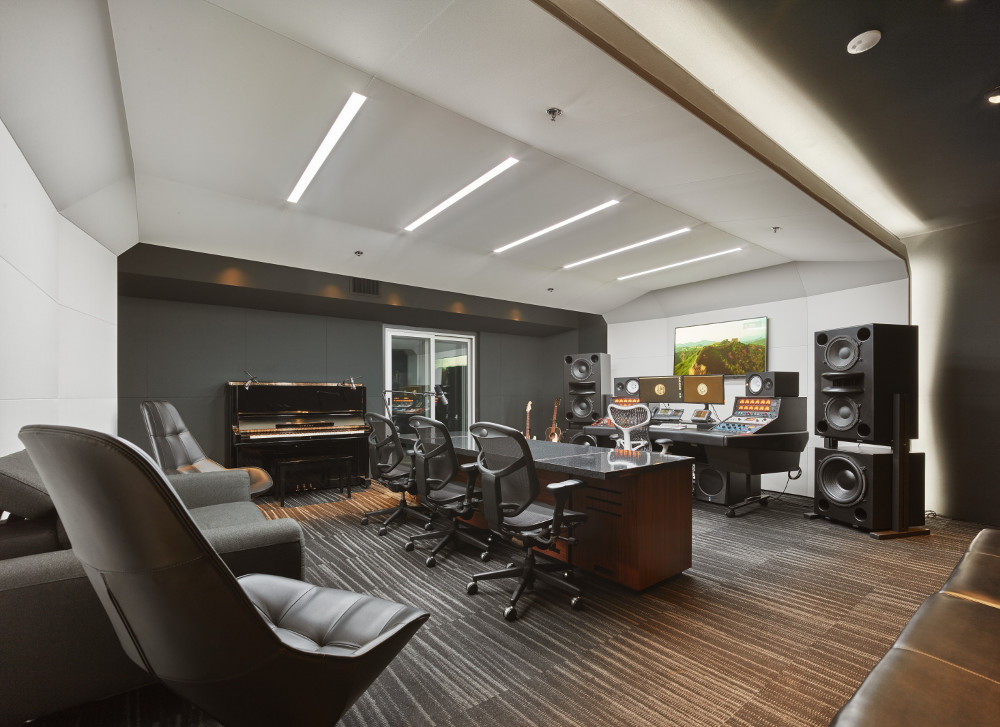
“Studio A with the Iso Booth. Looking towards the console Augspurger DUO 12 monitors. The large white ceiling treatment is a built in low frequency absorber.” (All photos: Elisabeth Caren)
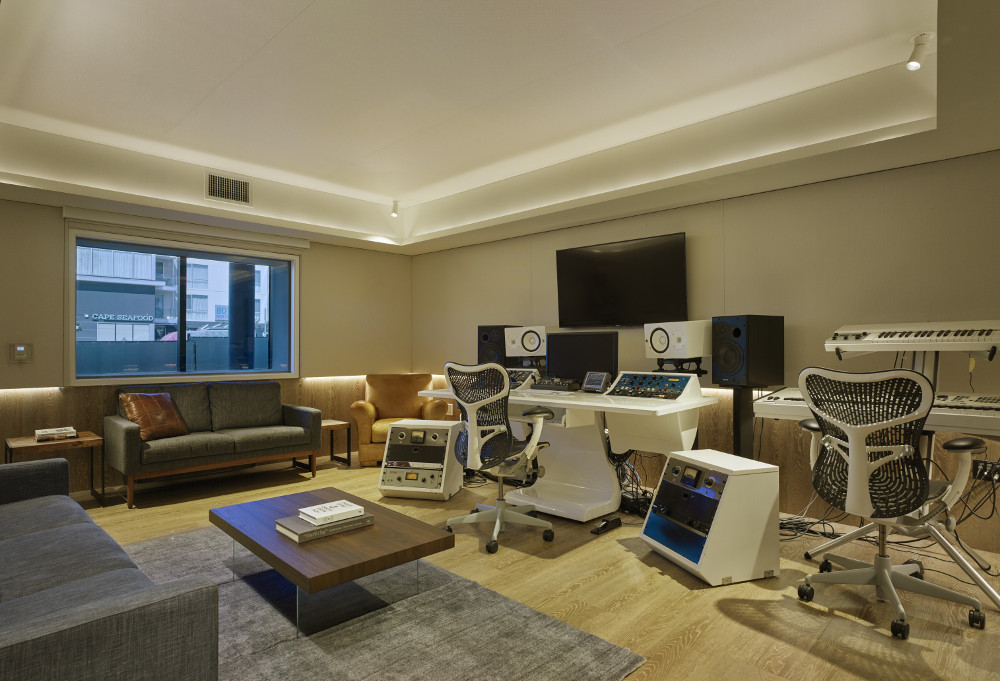
“Studio B Looking towards the window & Fairfax Avenue. Robust sound isolation was achieved at the window with triple pane construction and a large air cavity.”
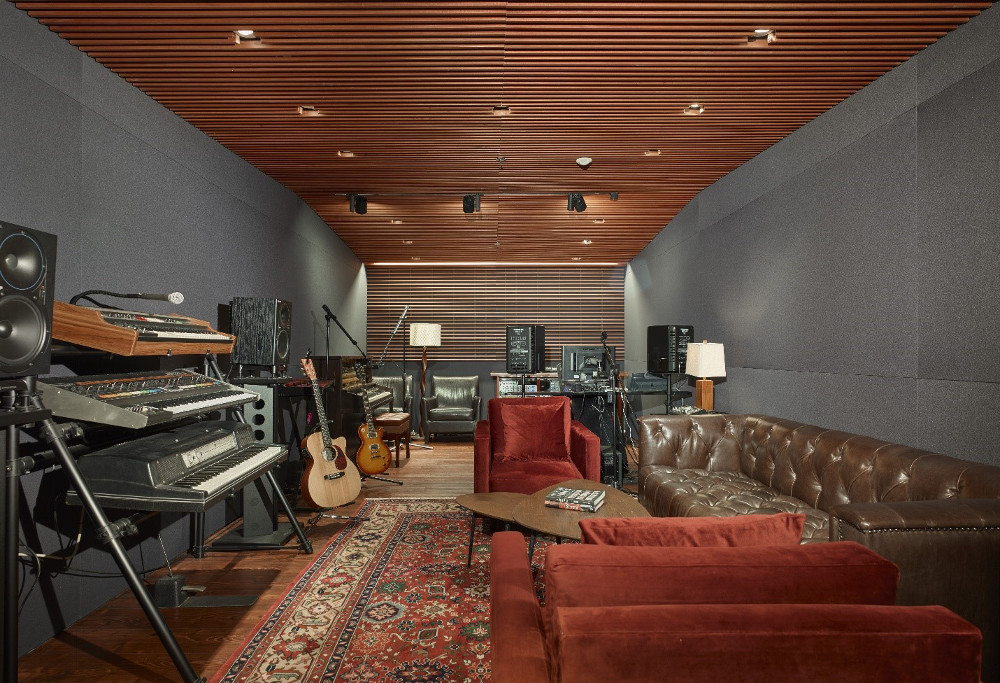
“Studio C Utilizes a wood slotted wood ceiling with low frequency sound absorption above. This room is acoustically dead and the furniture can easily be reconfigured for different usages.”
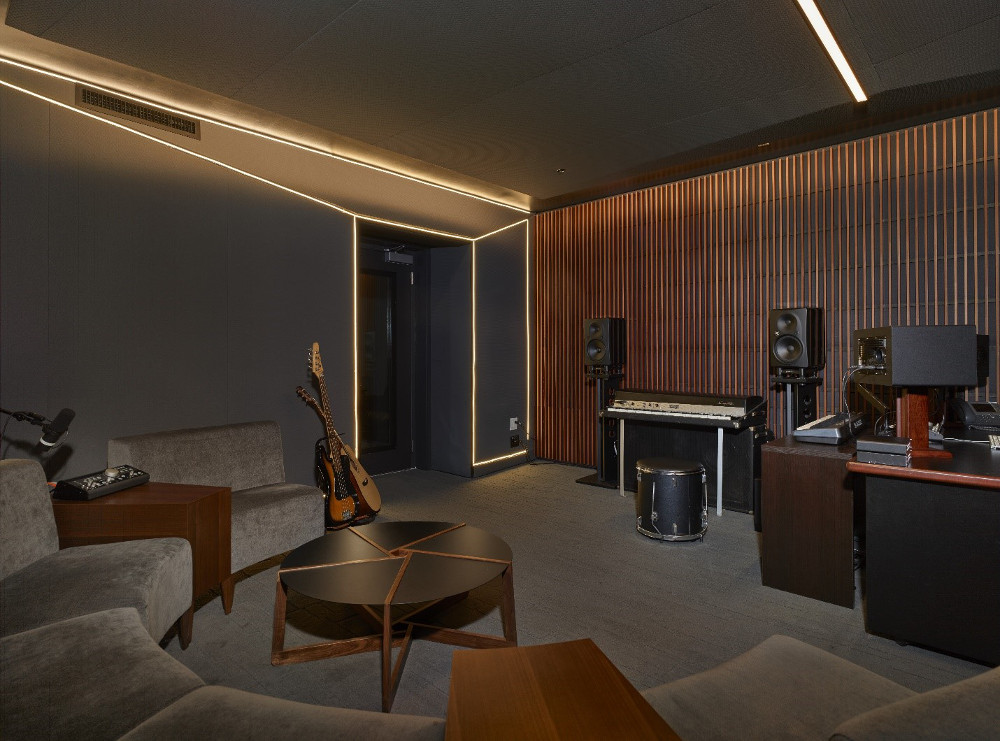
“Studio D has a circular couch for musicians to better communicate. The engineer is intentionally located in the corner so the writers have better interaction. The iso booth is pictured.”
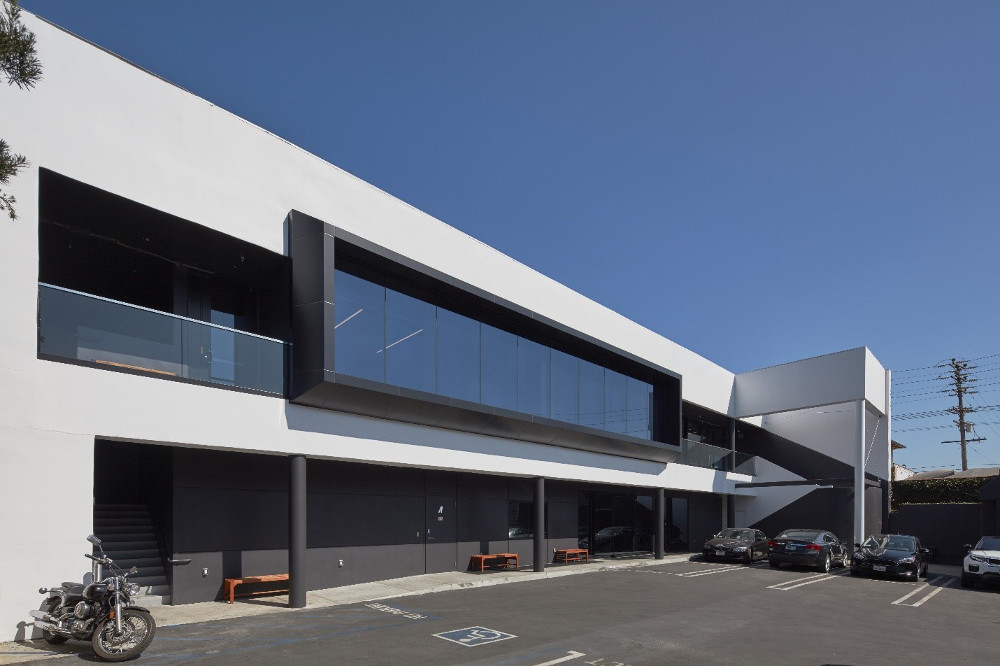
“The entire design team consisted of Creative Space who served as the architect of record and Shimoda Design Group who served as the design architect. The building was originally a school and lacked architectural definition — strong forms were used to improve the appearance of the façade.”
Please note: When you buy products through links on this page, we may earn an affiliate commission.







